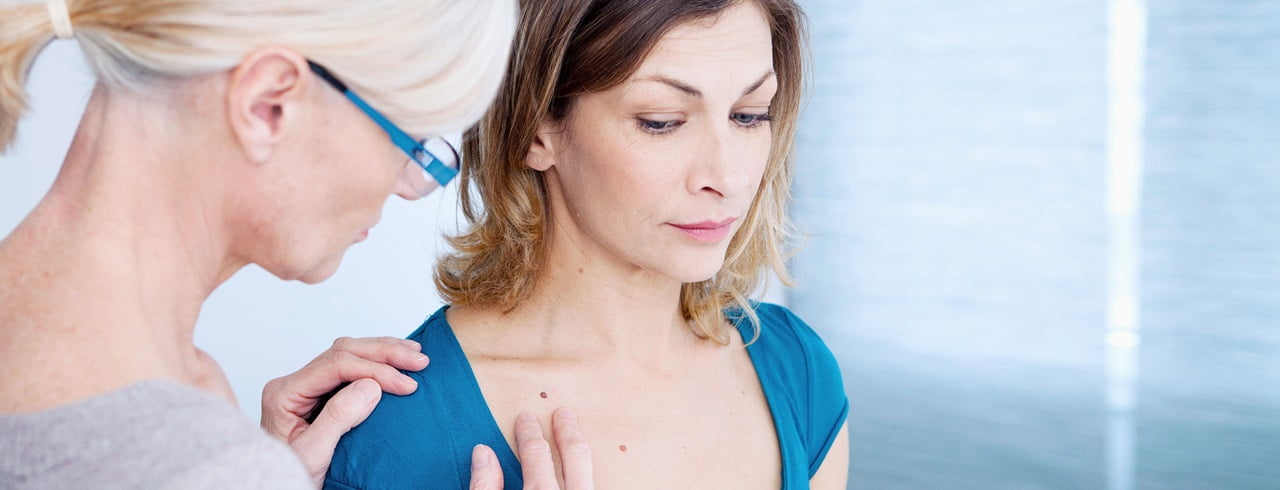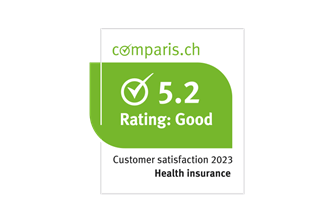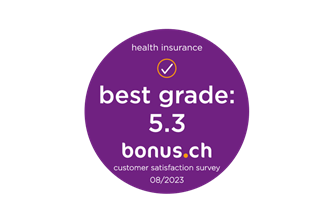
Skin check: getting problems checked out with telemedicine
Flaking, pustules and welts are signs of skin problems that can occur at any stage of life. In this health tip, we explain when and how a telemedicine consultation can provide answers quickly and conveniently, and perhaps even be the first step on the road to treatment.
The skin is the largest organ in the human body and acts as its protective layer. Every day it is exposed to countless environmental influences that can lead to skin problems. But our skin's health can also be affected by internal processes. Depending on the cause, the skin can react with redness, pustules, blisters, inflammation, nodules or flaking. A telemedicine check-up is perfect for classifying skin problems. "If the doctors at santé24 are given high-quality photos, we can often provide a quick and straightforward assessment of the situation with the help of the information provided by the patient," explained Silke Schmitt Oggier, Medical Director at santé24.
Gaining a good overview with the right perspective
"High-quality photos" refers to pictures taken from different angles rather than images with a particularly high resolution. "It goes without saying that the changes in the skin must be readily apparent in the photographs. But in order for us to make an assessment, it's just as important to know where the change has occurred and whether it can be found in the same place on the other side of the body, for example on the other hand or the other side of your back," she said. "We also need to be able to ascertain the exact nature of the change in the skin – for example if it is raised, flaking or combined with blistering." For anyone insured with SWICA, the BENECURA app is a good way to take photos of any skin conditions. The app gives users detailed instructions regarding the best way to take pictures from three different angles. Another advantage of the app is that the images are transmitted to santé24 via a secure connection.If we are given high-quality photos, we can often provide a quick and straightforward assessment of the situation. Dr Silke Schmitt Oggier, Medical Director at santé24
Moles cannot be conclusively assessed
A telemedicine check-up can also help determine whether a mole is benign or malignant. The doctors at santé24 look for certain telltale signs, such as: Has the mole changed or grown recently? Do the edges look frayed or jagged rather than smooth? Is it bleeding or itchy? These indicators enable them to make an assessment and decide how urgently it should be checked. For legal reasons, however, telemedicine cannot provide a definitive assessment of whether a mole is benign or malignant. As Oggier explained, "An unequivocal assessment of a mole can only be made on the basis of an in-depth evaluation of the pigmentation. This requires professional equipment and an in-person consultation with a dermatologist."Video about the topic
Rapid professional help for skin conditions
Whether you have a rash, a fungal infection, or your skin is inflamed or itchy – santé24 offers people insured with SWICA a free dermatological consultation, as well as a recommendation for treatment if possible. SWICA also works with the OnlineDoctor service. On this platform, users can have their skin conditions assessed by dermatologists for 49 francs: Find out more19.01.2022
In the event of further health-related questions, SWICA customers can contact the santé24 telemedicine service free of charge on +41 44 404 86 86. A telemedicine practice licence allows santé24 physicians to provide additional medical services in cases that are suited to a telemedicine approach. SWICA customers can also use the BENECURA medical app to carry out a digital SymptomCheck and receive recommendations about what to do next. During a subsequent phone call with santé24, customers can decide for themselves whether to release their information from SymptomCheck to santé24.




